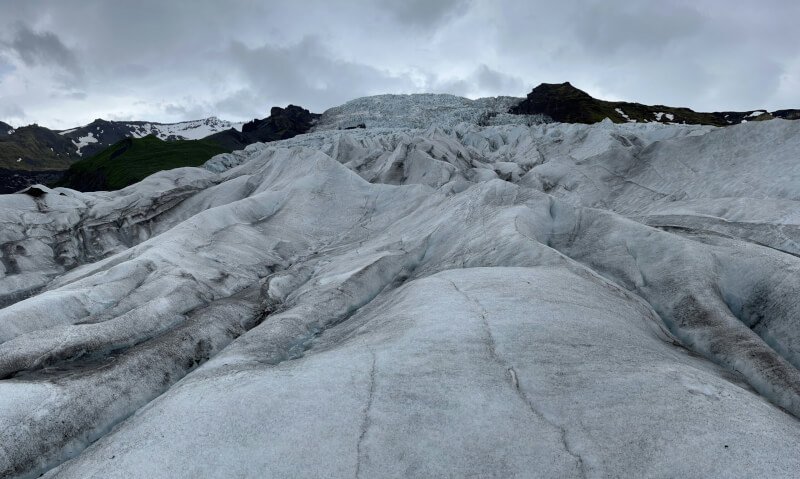Imagine yourself in the midst of a breathtaking yet treacherous wilderness, miles away from any sign of civilization. The Ultimate Wilderness Survival Handbook is here to equip you with essential skills and knowledge that may just save your life. Packed with expert advice and practical tips, this indispensable guide will unlock the secrets of surviving in nature’s most unforgiving environments. From building a shelter to finding and purifying water, navigating through dense forests to identifying edible plants, this handbook is your ultimate companion for conquering the wild. Get ready to embark on an adventure like no other, where the mastery of survival techniques is your ticket to overcoming the challenges of the great outdoors.
Essential Skills
Building Shelter
When you find yourself in a survival situation, building shelter should be one of your first priorities. A well-built shelter can protect you from the elements and provide a safe haven. Look for natural resources, such as branches and leaves, to construct a makeshift shelter. Ensure that your shelter is sturdy and provides adequate insulation. This will help you stay dry and warm, increasing your chances of survival.
Starting a Fire
Fire can be a lifeline in the wilderness. It provides warmth, a means to cook food, and a signal for rescuers. To start a fire, gather tinder, kindling, and fuel. Tinder can be made from dry leaves, bark, or grass. Kindling consists of small sticks, while fuel refers to larger pieces of wood. Use a firestarter, such as waterproof matches or a lighter, to ignite the tinder. Additionally, mastering fire-building techniques, such as the teepee or log cabin method, can help you maintain and control your fire.
Finding and Purifying Water
Water is vital for survival, but it can be scarce in the wilderness. Knowing how to find and purify water is essential. Look for natural sources such as rivers, streams, and lakes. Use your navigation skills to locate water or follow animal tracks, as they often lead to water sources. However, remember to purify the water before consumption. Boiling the water for at least five minutes or using water purification tablets can help eliminate harmful bacteria and parasites.
Navigating without a Compass
While a compass is a valuable tool for navigation, it may not always be available in a survival situation. However, with some basic knowledge, you can still find your way. The sun can be a useful compass during the day. By observing its position, you can determine east and west. Additionally, paying attention to natural signs, such as moss growth on trees or the direction of flowing water, can provide hints about direction. Trusting your instincts and staying aware of your surroundings can also help you navigate without a compass.
Identifying Edible Plants
Knowing how to identify edible plants can be crucial for acquiring food in the wilderness. While foraging for wild edibles, it is vital to be cautious, as some plants may be toxic. Familiarize yourself with plants such as dandelions, cattails, and wild berries that are safe for consumption. Look for specific characteristics, such as their shape, color, and leaf patterns. Remember, if you are uncertain about a plant’s edibility, it is best to avoid consuming it.
Basic First Aid
In a survival situation, being equipped with basic first aid knowledge can save lives. Knowing how to treat common injuries, such as cuts, burns, and sprains, is essential. Clean wounds with clean water and use bandages or improvised materials to cover them. Additionally, learning life-saving techniques like CPR and the Heimlich maneuver can be crucial in emergencies. Pack a basic first aid kit containing bandages, antiseptic wipes, pain relievers, and any necessary medications to be prepared for any medical challenges that may arise.

Survival Gear
Knife or Multi-tool
A knife or multi-tool is an essential piece of survival gear. It can serve various purposes, such as cutting rope, preparing food, and building shelter. Opt for a quality knife with a fixed blade that can withstand rugged conditions. A multi-tool provides additional functionality, including pliers, screwdrivers, and can openers. Whichever option you choose, ensure it is reliable and sharp, as it will be a valuable tool in a survival situation.
Firestarter
A firestarter is a must-have item for wilderness survival. In challenging conditions, it can be challenging to ignite a fire with traditional methods. Firestarters, such as waterproof matches or ferrocerium rods, provide a reliable way to start a fire. They are lightweight, compact, and highly durable. Having a firestarter in your survival kit ensures you can quickly and efficiently start a fire when needed.
Water Filter or Purification Tablets
Access to clean drinking water is crucial for survival. However, not all water sources are safe to consume. Carry a water filter or purification tablets to eliminate harmful bacteria, parasites, and viruses. Water filters with carbon components can remove unpleasant tastes and odors, enhancing the quality of the water. Purification tablets are lightweight and easy to use, making them a reliable solution when clean water is scarce.
Compass
A compass is a vital tool for wilderness navigation. It can help you determine your direction and maintain a sense of orientation. Look for a compass that is durable, accurate, and easy to read. Choose one with a liquid-filled capsule and a rotating bezel bearing markings for cardinal directions. Learning how to use a compass effectively can greatly increase your chances of finding your way in unfamiliar territory.
Emergency Whistle
An emergency whistle is a compact and lightweight device that can help you attract attention in a survival situation. Its high-pitched sound carries over long distances, making it an effective way to signal for help. Keep the whistle easily accessible on your person or attached to your backpack. In case of an emergency, blow the whistle in a series of three short bursts, as this is a universally recognized distress signal.
Tarp or Tent
Shelter is vital for survival, and having a tarp or tent can greatly aid in creating a secure and comfortable dwelling. Choose a lightweight and durable tarp that can withstand various weather conditions. A tent provides more protection but is bulkier to carry. Set up your shelter using natural surroundings, such as trees or rocks, to provide additional support. Additionally, using a tarp or tent can offer protection from rain, wind, and cold temperatures, assisting in your overall well-being in the wilderness.

Food and Water
Foraging for Wild Edibles
In a survival situation, finding food can be challenging. However, the wilderness offers an abundant supply of edible plants if you know where to look. Familiarize yourself with wild edibles such as mushrooms, nuts, and berries that are safe for consumption. Study guidebooks or take courses to learn about their appearance, habitat, and seasonal availability. Remember to avoid any plants with toxic characteristics and never consume anything you are unsure of.
Hunting and Trapping
Hunting and trapping can provide a sustainable source of food in the wilderness. Learn basic hunting techniques, such as stalking and camouflage, to increase your chances of success. Trapping methods, such as snaring or pitfall traps, can be effective as well. Study the behavior and tracks of animals in the area to determine the best locations for setting traps or planning a hunt. Always prioritize safety and adhere to local regulations when engaging in hunting or trapping activities.
Finding and Purifying Water Sources
Water is a primary necessity for survival, and finding clean sources of water is crucial. Look for natural water sources, such as rivers, streams, and lakes, but be wary of contamination. Ensure you have a reliable water filter or purification tablets to eliminate harmful microorganisms. Alternatively, learn basic wilderness water purification techniques, such as boiling water, using solar stills, or constructing a DIY water filter. Remember to stay hydrated and avoid drinking water from unknown or suspicious sources.
Cooking Methods
When it comes to cooking food in the wilderness, there are various methods to consider. Campfires provide a traditional and versatile option. By using a combination of hot coals and a grill grate, you can cook meat, fish, or vegetables to perfection. Additionally, portable stoves or mini backpacking stoves offer convenience and ease of use. They are lightweight, compact, and can be fueled by propane or butane canisters. Whichever method you choose, ensure you follow safety precautions when handling fire and cooking equipment.

Navigation
Using Celestial Navigation
In the absence of modern navigational aids, celestial navigation can be a valuable skill to possess. By learning to observe the stars, moon, and sun, you can determine your direction. The North Star, Polaris, is especially useful for finding true north in the Northern Hemisphere. Familiarize yourself with prominent constellations and their positions throughout the year. Combine this knowledge with a basic understanding of the Earth’s rotation to navigate successfully using celestial bodies.
Navigating with Topographic Maps
Topographic maps provide detailed information about the terrain, elevation, and landmarks in an area. Learning how to read and interpret these maps is essential for wilderness navigation. Study contour lines to understand the elevation changes, identify prominent features such as rivers or ridges, and plan your route accordingly. Use a compass in conjunction with the map to determine your current location and the direction you need to travel. Practice using topographic maps in familiar areas before venturing into unfamiliar territory.



